Related Research Articles
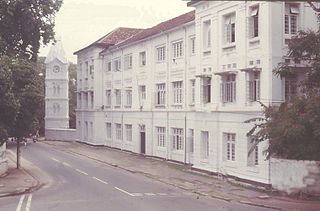
Ceylon Medical College was a public medical school in Ceylon. The college was established in 1870 as the Colombo Medical School. The college was based in Colombo. The college was merged with Ceylon University College in 1942 to form the University of Ceylon. The medical college became the university's faculty of medicine. The college was also known as Colombo Medical College.

De Soysa International Cricket Stadium is a multi-use stadium in Moratuwa, Sri Lanka. It is currently used mostly for cricket matches. The stadium holds 15,000 people and hosted its first Test match in 1992. The ground opened in 1940 and gained Test status in 1979. Moratuwa, located just eight miles (13 km) south of Colombo is renowned for its carpentry, cricket and its philanthropists. Indeed it was the most famous of these families that initiated the development of De Soysa Park Stadium, when they donated the 5 acre plot of land to the Urban Council in 1940, to develop the Sports Complex. An additional 2 acres were sold under its market value by another member of the family. The ground was named De Soysa Park and subsequently used mainly for Moratuwa Sports Club (MSC) and school competitions.

Charles Henry de Soysa Dharmagunawardana Vipula Jayasuriya Karunaratna Disanayaka popularly known as Charles Henry de Soysa, JP was a Ceylonese entrepreneur and philanthropist. He was a pioneering planter, industrialist and was the wealthiest Ceylonese of the 19th century. He was instrumental in the establishment of the first Ceylonese bank, the Moratuwa carpenters guild, the Ceylon Agricultural and National Associations. He is widely regarded as the greatest philanthropist of the island for contributions which includes the De Soysa Maternity Hospital, the Prince and Princess of Wales Colleges, the Model Farm Experimental Station and many other institutions and acts of charity, establishing infant-maternal healthcare and secular education for girls in the country. He would have been the island's first Knight Bachelor, but having died prior, his widow was given the rare honor of the use of the style and dignity of wife of the Knight Bachelor and was known as Catherine, Lady de Soysa.

Sir James Peiris was a prominent leader in the Sri Lankan independence movement, the first elected Vice-President of the Legislative Council of Ceylon and the first native Governor of Ceylon (Acting).
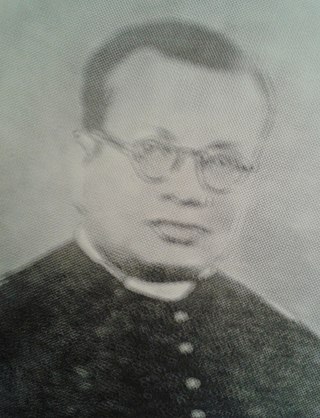
Charles Harold Wilfred de Soysa MA (1907-1971) was the first Ceylonese Anglican Bishop of Colombo, Sri Lanka.
Sir Henry Lawson De Mel, was a Ceylonese industrialist, lawyer, philanthropist and politician. He was a member of the Legislative Council and founder of the H.L. De Mel & Co.
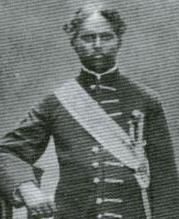
Gate Mudaliyar James Edward Corea was a Ceylonese colonial-era headman.

Sir Hilarion Marcus Fernando, FRCP was a pre-independence Ceylonese statesman, physician and banker. He was a member of both the executive council and legislative council as well as the chairman of the State Mortgage Bank of Ceylon.
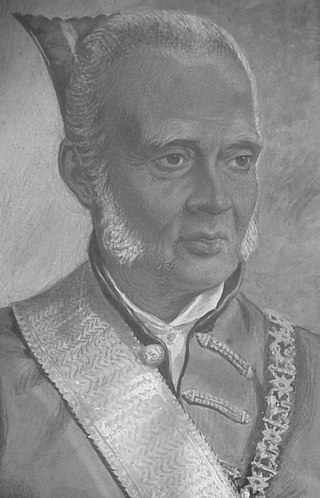
Gate Mudaliyar Jeronis de Soysa was a pioneering Ceylonese entrepreneur and philanthropist. He was a pioneer coffee planter and an industrialist who became the wealthiest Ceylonese of the 19th century by establishing the largest native commercial enterprise of the era. He was instrumental in the establishment of the first Ceylonese bank and is often referred to as a father of private enterprise in British Ceylon. He was the first Mudaliyar to be elevated in recognition of his philanthropy.
Major Benjamin William Bawa, KC, VD was a Ceylonese lawyer. He served as the acting Solicitor General of Ceylon, as well as the private secretary and extra aide-de-camp to the Governor of Ceylon.
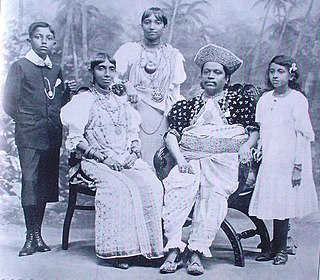
Rajakaruna Senanayaka Panditha Herath Wasala Kuruppu Mudiyanse Ralahamillage Punchi Banda John Henry Meedeniya was a Ceylonese legislator and a headmen. He was the Kandyan Sinhalese member of the Legislative Council of Ceylon and elected member of the State Council of Ceylon for Ruwanwella. He was awarded the title of Adigar by the British Government of Ceylon.

John Kotelawala was a Ceylonese police officer and businessmen. He was known for the murder of Francis Dixon Attygalle, one of the first sensational murder trials in Ceylon. His son General Sir John Kotelawala was the 3rd Prime Minister of Ceylon.
James Cecil Walter Pereira was the 4th Solicitor General of Ceylon. He was appointed in 1906, succeeding Ponnambalam Ramanathan, and held the office until 1912. He was succeeded by James Van Langenberg.
Sir Lambert Wilfred Alexander de Soysa also known as Sir Wilfred de Soysa was a Ceylonese entrepreneur, landed proprietor and philanthropist. He was the seventh son of Sir Charles Henry de Soysa and Lady Catherine de Soysa. Born at Alfred House Colombo and educated privately, then at Royal College, Colombo and Prince of Wales' College, Moratuwa, he completed his studies at the Royal Agricultural College, England.
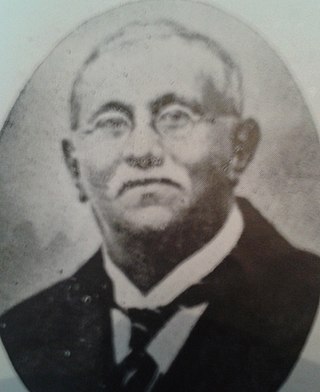
Alfred Joseph Richard de Soysa, also known as A. J. R. de Soysa was a Ceylonese landed proprietor and politician. He was a member of the Legislative Council of Ceylon.
Lakshapathiya Mahavidanalage Jacob De Mel also simply known as V. Jacob De Mel (1839-1919) was a pioneering Ceylonese mining magnate and philanthropist who is still regarded as one of the finest entrepreneurs to have emerged in Sri Lanka. His 100th death anniversary was remembered in Sri Lanka on 1 April 2019, coinciding with April Fools' Day.
Mudaliyar Don Charles Gemoris Attygalle was a Ceylonese entrepreneur and mine owner. He was a successful graphite mine owner and was given the titular title of Mudaliyar for social service by the British Governor of Ceylon. Through the marriage of his daughters, the Senanayake family and the Jayewardene family were connected and played a major part in the Sri Lankan independence movement and in post-independence politics, due in part to the wealth he had accumulated.

Charles Hubert Zaleski Fernando was a Ceylonese lawyer and colonial era politician. He was a member of the Legislative Council of Ceylon and the Colombo Municipal Council.
Hermann Albert Loos was a Ceylonese lawyer, judge and legislator. He was an unofficial member of the Legislative Council of Ceylon.
Joseph Lionel Christie Rodrigo, CMG was a Ceylonese academic. He was the professor of Western classics and dean of the faculty of arts of the University of Ceylon.
References
- 1 2 3 4 5 6 7 8 Wright, Arnold (1999). Twentieth century impressions of Ceylon: its history, people, commerce ... By Arnold Wright page 11, 105, 548-50. ISBN 9788120613355.
- ↑ Dep, A.C. "The Attygalle murder case". Sunday Times. Retrieved 15 October 2019.
- ↑ Gunasekera, Jayantha. "How Kotelawala (Snr) got young brother-in-law killed". Sunday Times. Retrieved 15 October 2019.
- ↑ N. E. Weerasooria (2006). Ceylon and Her People. University of Michigan. pp. 256, 341 & 352. ISBN 9555993858.
- ↑ "Stepping back in time with Baila". Wijeya Newspapers Ltd. Retrieved 6 December 2015.
- ↑ Who’s Who of Sri Lanka: The lives and times of forty eight personalities, Gamini Akmeemana (Daily Mirror) Retrieved 8 January 2016
- ↑ CEYLON'S BATTLE, The Straits Times (13 November 1929) Retrieved 2 November 2015
- ↑ Cumaranatunga, PN (2005). Patriots of Lanka. p. 120. ISBN 9559505947.
- ↑ The Eagle. St John's College, Cambridge. 1910. p. 240.